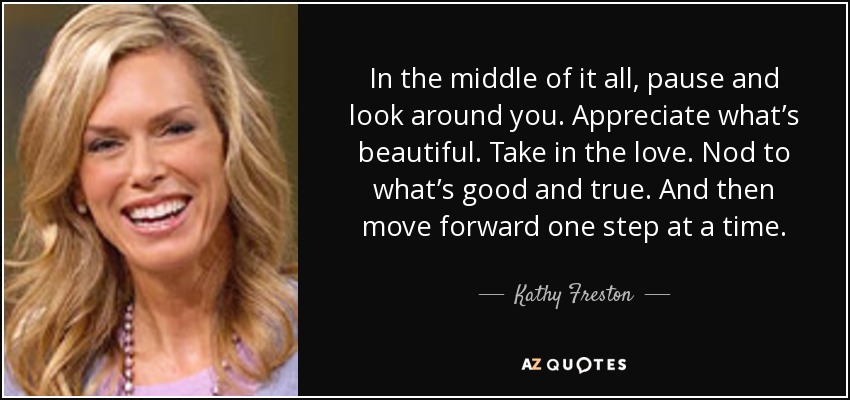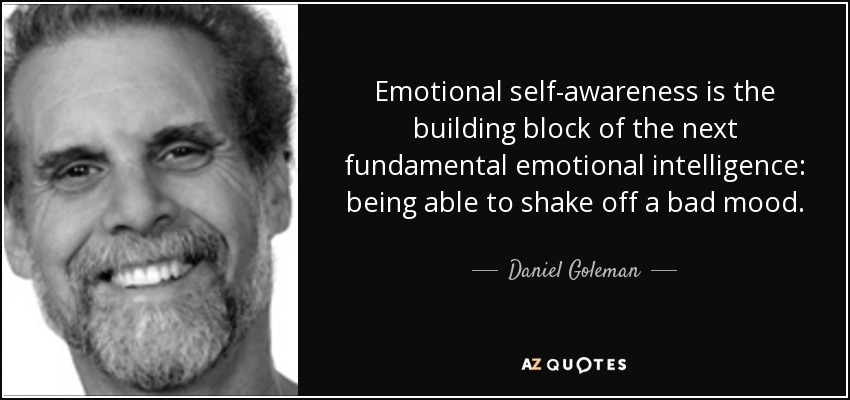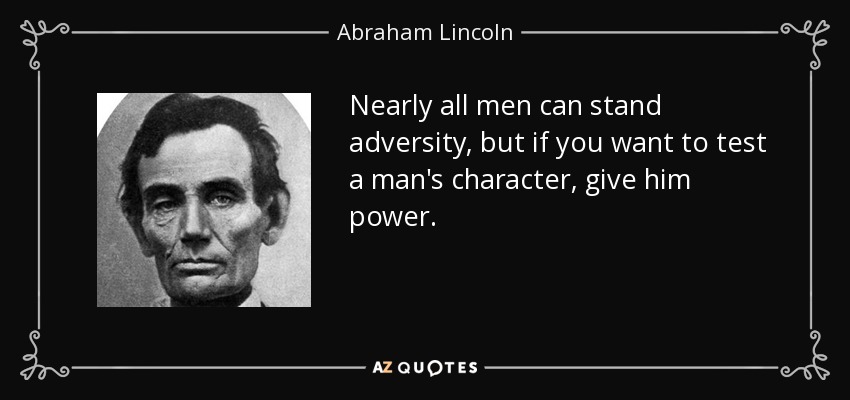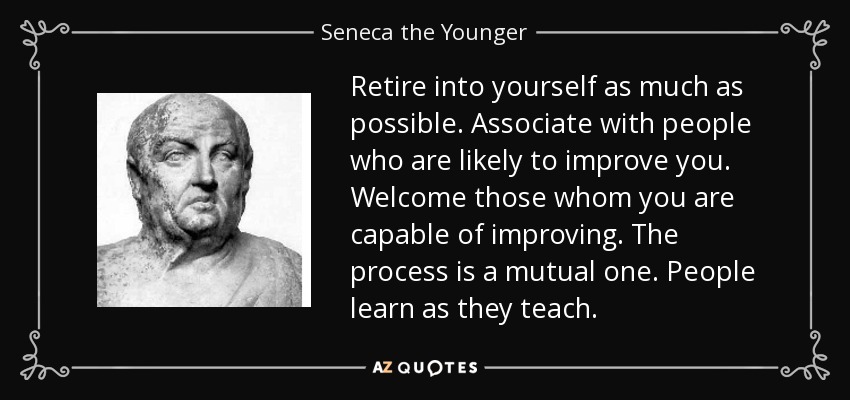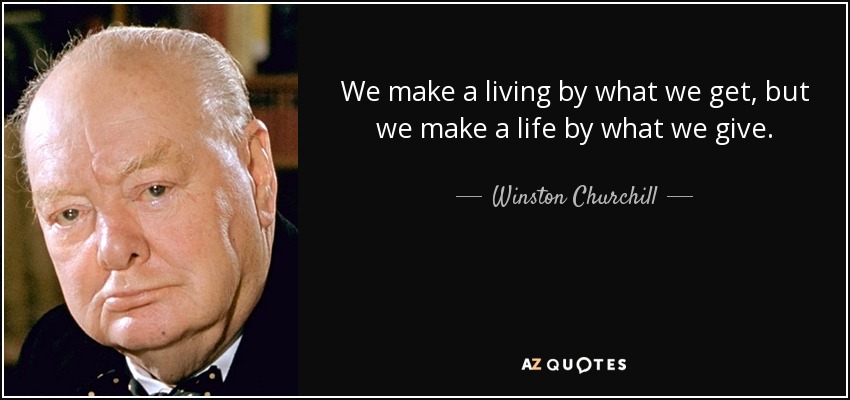Click here to return to Blog Post Intro

PAUSE TO LEAD FORWARD: THE PARADOXICAL LEADERSHIP BREAKTHROUGH
How many of us are overworked, stressed out, and sleep-deprived?
What sleep is to the mind and body, pause is to leadership and innovation. Pause transforms management into leadership and the status quo into new realities. Pause—the natural capability to step back in order to move forward with greater clarity, momentum, and impact—holds the creative power to reframe and refresh how we see ourselves and our relationships, our challenges, our capacities, our organizations and missions within a larger context.
Managers assert drive and control to get things done; leaders pause to discover new ways of being and achieving. Pause helps us slow down, connect with people, and do something that is meaningful.
Step back often. Reflect, and become more aware of yourself, your colleagues, and your mission. The earlier you do this in your career the more productive and fulfilling your leadership and your life will be.
Bob Johansen, ten-year forecaster and author of Get There Early and Leaders Make the Future, has characterized the speed- and action-oriented, fast-changing, demanding world we lead in today as a “VUCA world: Volatile; Unpredictable; Complex; Ambiguous.” Our addiction to action, our busy-ness, our preoccupation with incessant distractions and pursuit of the ubiquitous “more” in our 24/7, constantly connected, globally-caffeinated culture conspire to diminish rather than strengthen our leadership capacities. Johansen contends that we have “to flip the VUCA forces to terms that create possibilities and redefine VUCA as: Vision; Understanding; Clarity; Agility.”
Pause allows the digestion of things both conceptual and emotional. Pause can be a way to sense-making by bringing together a more integrated, complete picture of what is happening in and around us. If leaders today do not step back to gain fresh perspective and to transcend the immediacies of life, we will continue to crash economically, personally, and collectively.
Consider the second Law of Thermodynamics: As activity lessens, order increases. The Pause Principle is present in economies, physiologies, ecologies, communities, organizations, and nations. The Pause Principle is the conscious, intentional process of stepping back, within ourselves and outside of ourselves, to lead forward with greater authenticity, purpose, and contribution.
PAUSE TO PERFORM
Here are a few ways you can pause for growth and heightened awareness:
- Daily runs
- An intensive coaching and development program
- A prayer or meditation practice
- Sleep or power naps
- Reflecting and pacing in your workplace
- An annual strategic planning retreat (Check out my advice on Strategic Planning for You.)
Pause is our inherent tendency and our intentional practice to grow, to let new ideas emerge, to move beyond what is to gather insight, energy, and purpose.
Researchers Michelle Barton and Kathleen Sutcliffe make a hard case for what business leaders can learn from firefighters, who put their lives on the line every day to battle wild fires and save lives. Their research convincingly showed that more successful outcomes occurred when leaders paused, stopped momentum to encourage fire-fighting teams to challenge the current strategy, voice concerns, examine all the current information, and determine the best course of action rather than persist in blind dedication to the original plan. Through intentional interruptions, team members questioned, spoke up, and did not defer to someone else’s perceived expertise.
One of the most challenging developmental shifts for executives is the evolution from management effectiveness to leadership excellence. Research has demonstrated that if managers do not make the critical development move to increased interpersonal collaboration and high-order strategic agility, they will plateau in their careers.
Pause is a catalytic process that has the potential, if practiced consciously, to bring forth transformative shifts to move from management to leadership. Consider these seven key shifts from management effectiveness to leadership excellence:
- Moving from self-centeredness to self-awareness and service
- Moving from people dominance and control to people development and liberation
- Moving from complexity and confusion to clarity and hope
- Moving from a presumption of knowing and expertise to listening and learning
- Moving from heroic, unchallenged ideas to collaborative, constructive engagement
- Moving from the status quo to curiosity, exploration, synthesis, and innovation
- Moving from accuracy and efficiency to purpose and transformation
Pause is an inherent, generative principle that is always there, always available to us. Either we consciously go to it, integrating it in our lives, or it comes to rescue us.
As leaders, our capacity for organizational growth is directly proportional to our own growth. Before we can grow others with authenticity and purpose, we need to consider our own growth with authenticity and purpose. If we do, our development of others will be powerful, and the credibility we have gained with others will be well earned.
Learning to bring clarity to complexity is an essential value-creating competency for leaders today. Bob Eichinger and Michael Lombardo of Lominger International identified “dealing with ambiguity” as the most important leadership competency in shortest supply, and the Center for Creative Leadership backs this up with research showing that the number one issue facing senior leadership today is “dealing with complex challenges.” The greater the complexity, the deeper the reflective pause required to convert the complex and ambiguous to the clear and meaningful. Pause helps us to move from the transactive or the hyperactive to the transformative.
As one CEO put it, “The key to leadership is knowing precisely when to step forward and when to step back. Reflection is not an end in itself, but rather our unique human capability to process the difficult, the challenging, and the complex.” Management effectiveness involves doing more with greater efficiency and speed, while leadership excellence involves doing differently by slowing down to transform complexity to clarity. Manage in low-complexity situations; lead when facing high-complexity environments.
MOVING FROM HESITATION TO PAUSE, THEN DELIBERATE ACTION
As leaders, we pause to face ourselves, pause to face challenges, and pause to bring forth creative potential. Managers speed up to increase efficiency; leaders slow down to connect to the meaningful, the important, and the innovative. As Margaret Wheatley says, “Thinking is the place where intelligent actions begin. We pause long enough to look more carefully at a situation, to see more of its character, to think about why it’s happening, to notice how it’s affecting us and others.”
Losing or giving up the practice of pause is giving up our ability to restore and refresh, focus and connect, clarify and innovate—all of which are essential in our demanding lives.
Pause Practice 1: Be On-Purpose
As Warren Bennis counsels, “Leaders remind people what is important.” Meaning inspires us to “go beyond what is,” to contribute something extraordinary.
Pause Practice 2: Question and Listen
Questions are the probing language of pause, forcing us to step back, re-frame, re-vision, and reconsider. Listening is the receptive language of pause. Listening with authenticity opens up doorways to self-knowledge, understanding others and innovative possibilities.
Pause Practice 3: Risk Experimentation
Managers minimize risk and experimentation to increase predictability; leaders monitor risk and accelerate experimentation to foster breakthrough.
Pause Practice 4: Reflect and Synthesize
Managers analyze, judge, and decide to manage current realities; leaders reflect and synthesize to create new realities. Great leaders take the time to incubate analysis to discover higher-order, more strategic, forward-thinking solutions.
Pause Practice 5: Consider Inside-Out and Outside-In Dynamics
Good leaders look outside themselves for strategic solutions; great leaders look inside themselves and outside themselves for enduring transformation. Balancing our pause practices “to look inside” and “to look outside” is the pause-through needed for authentic, enduring breakthrough.
Pause Practice 6: Foster Generativity
A generative leader pauses to prepare the next generation more than he or she pauses for personal success.
Pause Practice 7: Be Authentic
There is no greater influential act than a leader authentically being the change he or she wishes to see in their organization. Managers build dependability through accuracy; leaders build credibility through authenticity.
Self-awareness is the most crucial developmental breakthrough for accelerating personal leadership growth and authenticity. Learning to pause to build self-awareness is a lifelong, evolving process. From Daniel Goleman, we learned that self-awareness, self-management, and empathy are three abilities “that distinguish the best leaders from average.” He asserts, “You put all those together in every act of leadership.”
St. Augustine reflected, “People travel to wonder at the height of mountains, at the huge waves of the sea, at the long courses of rivers, at the vast compass of the ocean, at the circular motion of the stars; and they pass by themselves without wondering.”
Managers require competency to drive results; leaders embody character to build a compelling, sustainable future. Character is that small, still voice that sometimes is too loud for comfort in the middle of the night, and sometimes is too faint for influence in the heat of daily leadership.
Character when aligned with action adds energy, value, service, and contribution to all it touches. Emerson says, “Character is higher than intellect.” Einstein agreed. He pointed out, “Most people say intellect makes a great scientist. They are wrong, it is character.”
Terry Bacon, an expert on power and influence, has conducted extensive research on the personal sources of power. Significant in his research, “character is the only source of power that can add to or subtract from every other source. You can be very knowledgeable, eloquent, attractive and have existing relationships with the people you are trying to influence, but if they perceive that your character is flawed, your power to lead and influence them will be greatly diminished.” Bacon writes, “Being recognized as a person of character enhances your capacity to lead and influence others because they trust your intentions, are more confident in your leadership, and see you as a person worth emulating.”
Managers create processes and control mechanisms to regulate and enforce ethical behavior; leaders embody character to inspire ethical behavior in others. When we are leading from our character, we exude qualities of authenticity, purpose, openness, trust, courage, congruence, and compassion.
As Confucius advised, “When you meet a virtuous person, try to equal him. When you meet a person without virtue, look at your own shortcomings.” The battle between being self-serving and serving others is a continual human struggle.
Character is power … the power to create rather than destroy; the power to energize rather than deflate; the power to serve others rather than merely serving self. Possibly the most character-driven U.S. President, Abraham Lincoln, understood the leadership challenge well.
Pause to practice character; ready yourself for the next moment of personal or professional power.
Managers pride themselves on rapid decision making, while leaders know the value of slowing down to incorporate values and purpose into more grounded and thoughtful decision making. Warren Bennis counsels us that “leaders remind people what is important.”
The art of leadership involves elevating souls beyond the dust of daily living; purpose shakes the dust off of the everyday fabric of management, revealing the interwoven patterns of leadership meaning and service.
Leaders rarely fail due to lack of talent; success or failure is mainly the domain of character, values, and purpose. Purpose inspires a leader’s passion, awakens a leader’s energy, and that force of energy impacts the world.
What is the one thing—the thing that you must contribute or that you aspire to contribute—from which you do not want to retire?
As leaders, we do too much and rest too little. Restorative pause through meditation, exercise, power naps, and enough sleep are crucial. Health issues, relationship stress, and exhaustion are common. What do you do to restore yourself daily? Weekly? Quarterly?
As the British poet Lord Byron wrote, “The soul must pause to breathe.” The most complete picture of our deepest selves is revealed in both the outer connection and community we achieve with others as well as in the inner communion we achieve through introspection.
PAUSE TO GROW OTHERS: BALANCING CARE AND DRIVE
We are most effective as leaders, and as developers of talent, when people first know that we genuinely care, that we are totally invested, completely committed to them.
Ram Charan and Bill Conaty, authors of The Talent Masters: Why Smart Leaders Put People before Numbers, explain it this way: “If businesses managed their money as carelessly as they manage their people, most would be bankrupt. The great majority of companies that control their finances don’t have any comparable processes for developing leaders or even pinpointing which ones to develop.” Managers perceive people as a resource, a cost to be cut or an asset to be optimized; leaders see people as a source, a potential generator of energy, innovation, and purpose.
Leadership is like cooking a fish. One takes time to choose a high-quality fish. One treats the fish in a delicate manner, and once one begins preparing the fish, it is best not to interfere too much. It is very important not to over-control it or overwork it. It is best to start cooking, step back, turn it once, and let it finish. It is the Taoist principle of Wu Wei, the principle of least action. See the work. Do the work. Don’t interfere too much. Success comes by doing just enough, not too much.”
In growing others, particularly high-potential talent, often less is more.
Pause is the most fundamental process underlying personal and organizational transformation. All leadership assessment, leadership feedback, leadership development, and leadership coaching are catalyzed by pause.
The best time to influence your next generation of talent is about three years before you hire them. The leadership development we engage in now, personally and organizationally, will influence both current and future generations of leaders.
The two most valuable pause tools for fostering the growth of others are questions and listening. Questions are the expressive, probing language for growing others (see John Maxwell’s Good Leaders Ask Great Questions); listening is the receptive, facilitating language for growing others.
Questions can “flip the VUCA forces” from volatility to vision, from unpredictability to understanding, from complexity to clarity, and from ambiguity to agility. Questions activate the catalytic power of pause to help us grow.
Questions without authentic listening are thinly veiled challenges, judgments, and assertions; challenging questions with authentic listening activates latent power, potential, and collaboration.
Effective leaders speak to influence and motivate; exceptional leaders listen to learn, collaborate, and innovate. As the thirtieth U.S. president, Calvin Coolidge, put it, “No man has ever listened himself out of a job.”
Research confirms that a startling 67 percent of new leaders in organizations fail within eighteen months. Why? Lack of listening. Why do teams usually break down? Poor listening. Why do relationships in general fail? Inadequate listening.
Here are three common pitfalls that inhibit people from stepping back for authentic listening:
- Hyper Self-Confidence: When we see ourselves as the quintessential expert, the most experienced or accurate person in the room, we position ourselves to fall into a listening black hole.
- Impatience and Boredom: When conversations or meetings don’t reflect our point of view or are not intellectually challenging enough, we may get impatient or bored. Our inner voice, drowning out other voices in the room, says, “They are not getting it!” As St. Francis advised, “Seek first to understand.”
- Bias for Action: Sometimes listening is challenging because we want to do something, not just hear about it. Give introverts space to speak up. Step back more and step in only when absolutely necessary. Managers take action quickly to advance the organization; leaders listen deeply to activate latent energy and possibility.
Exceptional leaders know when to be receptive—to be humble, listen, and learn—and when to be assertive. Humility keeps leaders open to learning; confidence compels leaders to serve, share, and create value. Leaders need to do both.
Pausing for developmental dialogue elevates the business conversation from management tactics to leadership excellence. Mixing the receptive art of listening with the expressive art of visionary leadership is the alchemic formula for enduring success in today’s information-rich, flat world.
To help people grow, stay out of the expert, mentor role, and pause to help people sort out their current situations. Build awareness by using questions and listening to help others sort out a variety of internal or external challenges.
The key development breakthrough of growing oneself is self-awareness and authenticity; the key development breakthrough of growing others is service and generativity.
Be a generative leader… Pause to accelerate the growth of others.
The true measure of your leadership will not turn out to be your great achievements, but the number of great leaders you turn out.
PAUSE TO GROW CULTURES OF INNOVATION
In today’s VUCA world, efficiency is the mark of management, whereas innovation is the hallmark of leadership. Inventors create product and service breakthroughs; authentic leaders foster enduring cultures of breakthrough innovation.
Pausing to read a book (or a blog post summary!) can ignite the spark that catalyzes radical innovation.
Managers accelerate to keep pace with the competition; leaders paradoxically step back to go beyond the competition. While rallying people around a common, compelling mission of innovation is crucial, it is also extremely critical to create an atmosphere in which experimentation and failure are seen as an ally not a threat.
At the end of your life, what do you hope others are thanking you for changing?
As innovative leaders, we must have the confidence and self-trust to repeatedly risk failure, the courage and openness to absorb hard-earned learning, and the endurance to eventually break through.
Consider these three valuable pause moments:
- Backwards Pause: Stepping back when things are not working in order to analyze how to take a new path
- Mission Pause: Stepping back when we have lost our way and need to restore a sense of purpose
- Forward Pause: Stepping back to envision aspirational dreams for imagining a big or a new possibility
Jeff George, global head of Sandoz, was recently listed as number nine in Fortune magazine’s “40 under 40,” along with Facebook’s Mark Zuckerberg and Google’s Larry Page. Jeff’s fast-paced, results-driven, lightning-quick approaches fit the generics industry well. He said, “My meditation practice gives me the ability to pause deeply within myself as a preparation for the day. I tend to be energetic and driven. The meditation helps me to bring my whole self—drive and heart, passion and purpose—to all that I do and into all my interactions with my teams. Leaders must step back to drive forward with both heart and mind.”
Pause is the human mechanism that allows us to break the reactive boundaries of our past conditioning to the creative, innovative, multifaceted repertoire of first-time breakthroughs. Pause provides multiple potential futures, multiple possibilities for innovative leadership.
Innovation begins with an agile leader who proactively engages others in the shift to a new reality. Managers move the current organization into the future, whereas leaders transcend current realities to create the future now. Managers leap to the answers; leaders trust curiosity, and the learning that results from inquiry.
Make sure your key people are encouraged to spend at least 15 percent of their time exploring and prototyping new ideas.
Pause for two very important final reflections:
- Pause It Now: First and foremost, are you doing everything possible to grow yourself, grow others, and grow innovation? Global transformation begins with leaders like you authentically serving their immediate spheres of influence.
- Pause It Forward: What more could you also do to “play a bigger game” to more positively influence the broader systems and human needs in our local communities and the world?
As Ray Anderson said, “Unless someone leads no one will.”
It is up to us, the current generation of leaders, to create the future. It is up to us to pause it forward with authenticity, purpose, and generativity.

